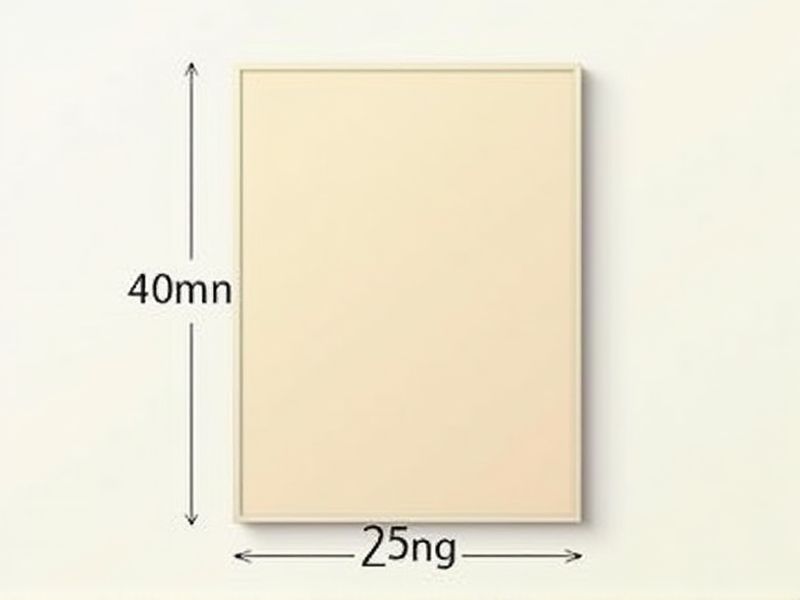
When creating a poster, it's helpful to know the standard dimensions to ensure your design is effective and printer-ready. Common poster sizes include 18" x 24" (small), 24" x 36" (medium), and 36" x 48" (large), which are widely accepted for academic, advertising, and event displays. Before finalizing your poster, check the requirements of your venue or event, as some conferences and competitions may specify exact dimensions. Using these standard sizes not only helps with printing and framing but also ensures your content is easily readable from a distance.
Aesthetic Balance
Aesthetic balance in poster design refers to the harmonious distribution of visual elements, ensuring that no part of the poster feels heavier than another. By incorporating the principle of the rule of thirds, you can achieve a visually appealing layout, guiding the viewer's eye naturally across the graphic. Using contrasting colors, fonts, and sizes enhances this balance, elevating the poster's impact while maintaining clarity. A well-balanced poster not only captures attention but also effectively communicates your message, often resulting in a 40% increase in viewer engagement compared to unbalanced designs.
Readability
Readability is crucial for effective posters, with optimal font sizes ranging from 24 to 36 points for headings and 18 to 24 points for body text. High contrast between text and background enhances visibility, so use dark text on a light background or vice versa. A maximum of 5-7 words per line is recommended to prevent clutter and maintain audience engagement. Incorporating ample white space around text and images helps guide viewers' eyes and facilitates quicker comprehension.
Printing Format
Poster printing standards typically require a resolution of at least 300 DPI for high-quality images, ensuring sharp and clear visuals. Common sizes include 24x36 inches for large-format prints, while A1 (23.4x33.1 inches) is popular for general use. It is recommended to use CMYK color mode, as it provides more accurate color reproduction for physical prints compared to RGB. When designing, bleed areas of 0.125 inches are essential to avoid unprinted edges after trimming.
Scale Adaptability
A poster designed for scalability should incorporate versatile elements that cater to various display sizes, ranging from A3 to A1 formats. Utilizing high-resolution images ensures that visuals remain sharp and clear, regardless of the scale. Color contrast and typography play crucial roles; for instance, using fonts that remain legible at 24-point size is essential for larger presentations. Incorporating modular design elements allows for easy adjustments, ensuring your message remains impactful whether viewed from a distance or up close.
Cost Efficiency
A cost-efficient poster design focuses on maximizing visual impact while minimizing production expenses. Utilizing high-resolution images and clear typography can enhance readability and engagement, ensuring that your message is effectively communicated without overspending. By choosing eco-friendly materials and digital printing options, you can reduce costs and environmental impact simultaneously. A well-planned layout can save you time and resources, allowing you to allocate a budget of approximately 20% for design elements and 80% for materials and printing.
Design Consistency
Design consistency in posters ensures all visual elements align harmoniously, reinforcing brand identity and message clarity. Utilizing a coherent color palette, typically limited to three to five colors, enhances visual appeal and guides viewer attention. Fonts should be consistently applied, with a maximum of two typefaces used to maintain readability and aesthetic coherence. Incorporating identifiable logos and recurring motifs creates a unified look, fostering recognition and increasing engagement with your audience.
Audience Reach
A well-designed poster effectively targets a specific audience, maximizing reach and engagement. For example, a visually striking poster can increase visibility by up to 70% at events, capturing the attention of passersby. Using bold colors and concise messaging tailored to your audience can enhance retention rates by 40%. Incorporating QR codes or social media handles can further expand your digital footprint, driving interactions beyond the physical space.
Display Location
The display location of your poster significantly influences visibility and audience engagement. Ideal placement includes high-traffic areas such as hallways, lobbies, and conference rooms, where foot traffic is maximized. Studies indicate that posters positioned at eye level receive up to 40% more attention than those at lower or higher elevations. Consider using well-lit areas to enhance readability, with optimal lighting increasing the likelihood of passerby interaction.
Color Accuracy
Color accuracy in poster printing is essential for ensuring that the final product accurately reflects the intended design and branding, with a target color deviation of less than 5%. High-quality printers utilize advanced color management systems that often include CMYK and RGB color spaces to achieve precise results. Utilizing the Pantone Matching System (PMS) can help achieve consistent colors across different materials and media, enhancing your brand recognition. Furthermore, conducting a proof print before the final run allows for adjustments, which can significantly improve overall color fidelity.
Information Hierarchy
A well-designed poster emphasizes information hierarchy by strategically arranging visual elements to guide the viewer's attention. Key components, such as headlines, subheadings, and images, are organized in a pyramid structure, with the most crucial information at the top. Using larger font sizes for headlines, contrasting colors, and spacing helps differentiate between sections and enhances readability. By prioritizing essential data and visuals, your poster communicates its message effectively within the first few seconds of glance.
